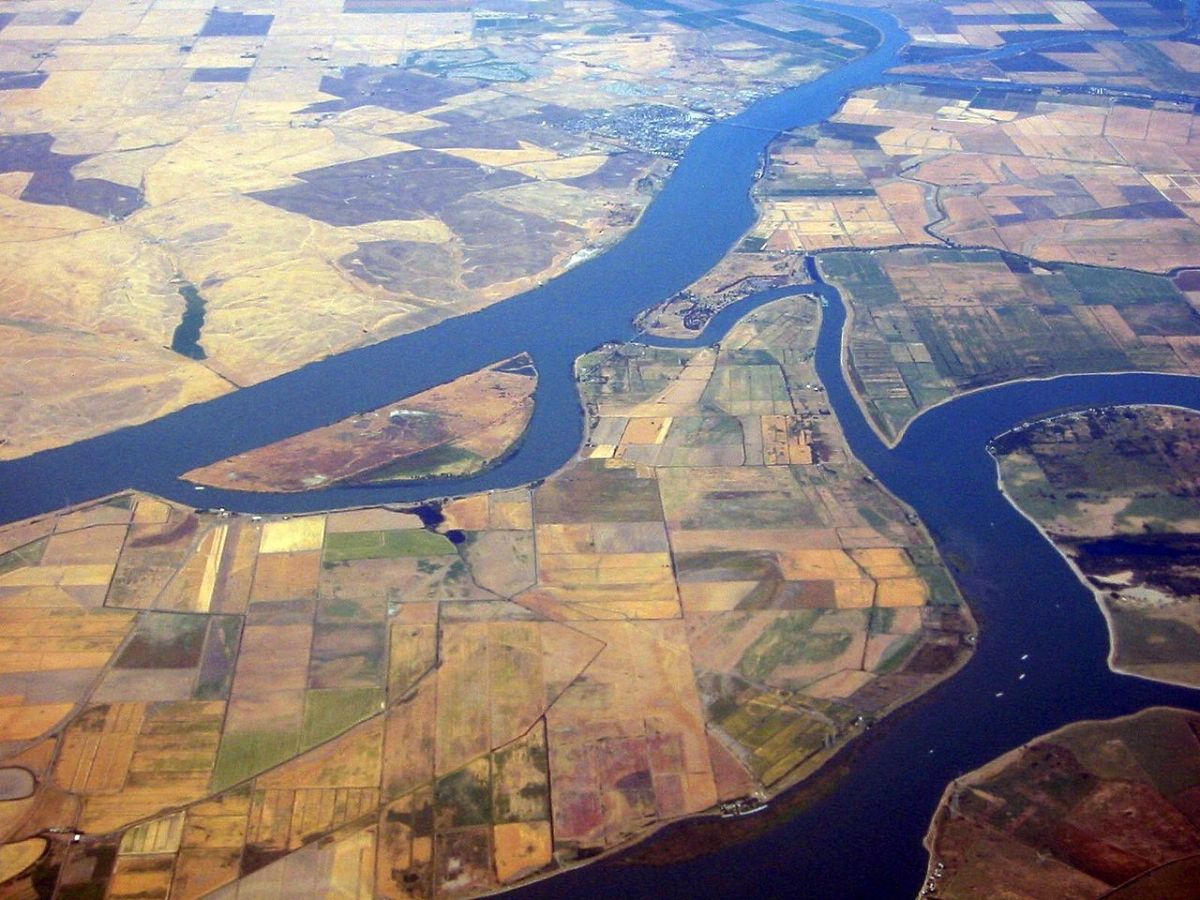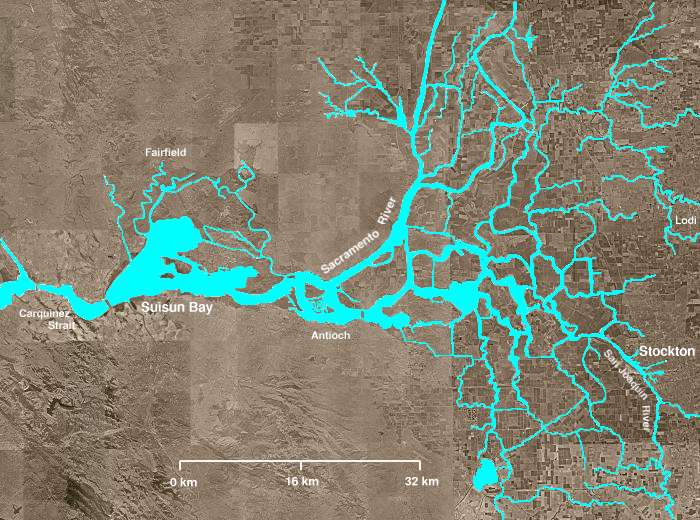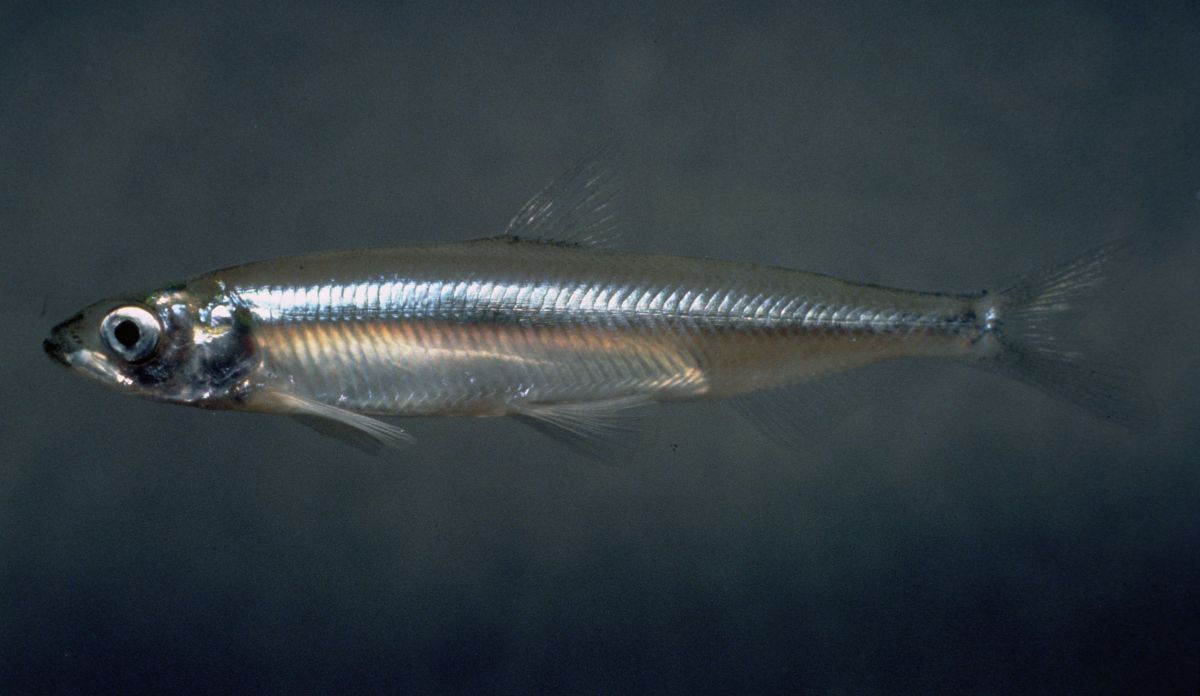Just say no to the California Water Fix
 |
|
Sacramento–San Joaquin River Delta in California, USA, looking northwest. The Sacramento River is above, the San Joaquin River below. The main island between is Sherman Island. At its upper tip on the left is Brannan Island with Brannan Island State Recreation Area occupying the small peninsula; at its upper tip on the right is Twitchell Island. Bradford Island is on the center right and Jersey Island in the right lower corner. The upper left is Solano County with the city of Rio Vista on the riverbank. Credit: Wikimedia Commons
|
There is a water project known by many different names that's being pushed and sanctioned by the Trump administration and Gov. Jerry Brown. It is called California Water Fix, previously known as the Bay Delta Conservation Project, aka Twin Tunnels, Delta Tunnels or Tunnels. Though this project has changed names, it is the proposed Peripheral Canal from 20 years ago, which was defeated by voters but has risen from the ashes of defeat.
Sierra Club opposed the plan then, and we opposed it four years ago when it returned as the Bay Delta Conservation Project. And the Club opposes this new iteration (CA WaterFix) of it today. The proposal would build a costly pair of giant tunnels to divert the Sacramento River water around the San Joaquin-Sacramento River Delta. Sound familiar? The water would then be transported directly to Central Valley farms and urban users in the Bay Area and Southern California. Sierra Club supports sensible, doable and less expensive alternatives to the tunnels that would provide better long-term water security for all with less harm to the environment.
Last month, the Natural Resources Defense Council, Defenders of Wildlife, Bay Institute and Golden Gate Salmon Association filed two lawsuits in U.S District Court in San Francisco to challenge approvals given by the Trump administration. The administration's position is that the project won’t cause significant harm to salmon, smelt and other fish and wildlife.
Now the Metropolitan Water District of Southern California is tentatively set to vote on this plan on Sept. 12. Please let the agency know that SoCal residents are NOT on board with this wrongheaded project that's not a sustainable water solution. See a sample comment letter at the end of this story.

Where and what is the Delta? The Delta is the freshwater body formed where the Sacramento, San Joaquin and several smaller rivers meet near the city of Stockton. Snowmelt from the Sierra Nevada mountain range in Northern California flows down the rivers through the Delta on the way to the Suisun and San Francisco bays and on to the ocean at the Golden Gate Bridge.
SoCal gets about 30% of its water from the State Water Project. The project runs from Lake Oroville in the north to the south by crossing the Sacramento San Joaquin Delta. The amount of water pumped out of the Delta has increased from 3 million acre-feet per year to 5.2-7.0 million acre-feet per year. An acre foot (325,000 gallons) is equal to a football field of water 1 foot deep. This is unsustainable and has led to eco-system collapse of the Bay Delta.
 |
| Delta smelt Credit: Peterson, B. Moose / U.S. Fish and Wildlife Service |
The Delta is vital to California’s economy. Not only does it supply water to SoCal, but it also supplies water to the agriculture-rich Central Valley and used to support a robust fisheries and salmon industry. The collapse has occurred because of excessive water diversions, introduction of nonnative species and water pollution. As water exports have grown, populations of critical fish species such as Chinook salmon and Delta smelt, which salmon need to survive, have plummeted. We are in a race against time to save those species from extinction.
It is not about farmers vs fish, but rather two 30-mile-long, four-story-high tunnels that would greatly accelerate the decline of the largest estuary on the West Coast. The Delta provides essential habitat for native and migratory species but would not bring water sustainability or reliability that California users require, and would increase water rates to pay for it. The tunnels are on record to cost taxpayers $67 billion. With this sky-high price tag, how can we then afford to invest in local water solutions? The cost of this project would burden Californians, our children and our children’s children for generations, creating a false sense of security and encouraging unsustainable water use.
The Delta Tunnels are estimated to cost SoCal residents from about $2000 to $10,000 per household, yet our local city governments are planning on importing less water. So why pay for water we plan on using less of when there are much better alternatives?
Sierra Club supports a common-sense approach. California and Southern California can meet their water demands sustainably and reliably by focusing investments on recycling, conservation, water efficiency and better ground water management for urban and agricultural users. These and other measures could reduce statewide demand by 9.7 million acre-feet per year. That's more water than is exported from the Delta even in rainy years.
California already acknowledges the feasibility of these conservation programs, as noted in the 2013 Delta Plan adopted by the Delta Stewardship Council.
Let us improve our local water independence, create local jobs and reduce environmental impacts by supporting local solutions.
1. Maintain and repair existing infrastructure. In California, fixing water infrastructure expenditure is estimated at $44.5 million; locally, the L.A. Department of Water & Power is required to fix aging pipes at 1% every 297 years. About 10% of urban water is lost through leaks, wasting energy and water.
2. Promote urban water recycling. We can and must increase water supplies statewide by recycling all wastewaters for potable and non-potable reuse. In this regard, Southern California leads the way. The Water Replenishment District and the Sanitation District have signed a 30-year contract to eliminate the need for imported water to recharge our local groundwater. We can and should demand more water reuse from our local water agencies. Water recycling comes in second only to water conservation as the biggest “new” source of water.
3. Manage ground water sustainably. We need to support and demand cleanup of local contaminated aquifers and supporting groundwater recharge where feasible, e.g. the San Fernando Valley Aquifer. This would limit dewatering of our shallow water basins and increase desalination of brackish groundwater.
4. Last but not least, urban water conservation. This is the foremost, least expensive, least energy-intensive and environmentally safe way to meet our local water needs. With existing technology, new landscape, plumbing and green building ordinances the potential for water savings have increased tenfold. Other remedies include:
- The laws requiring proof of adequate water supply before building should be strengthened at the local level.
- Limiting landscaping water use. In Los Angeles, 70% of all water is residential outdoor use.
- Capturing rain water, which would reduce the reliance on potable water for landscaping needs and provide a recharge benefit to underlying groundwater aquifers. A 1-inch storm can produce 10 billion gallons of runoff. If each of the 800,000 residential properties of LA were to install just 1 single 55-gallon rain barrel, the city estimates saving about 800 million gallons of water per year.
- Reusing graywater. Graywater systems are legal in California. Homeowners could reuse up to 80% of this water to irrigate plants and trees, saving up to 50, 000 gallons a year.
What you can do
Take action today and support the Angeles Chapter Water Committee by writing and/or calling your local mayor, city councilmember and water agency. Ask them to vote NO on any measure to approve and finance the Twin Tunnels. Also email the Metropolitan Water District at OfficeoftheGeneralManager@mwdh2o.com and rcastro@mwdh2o.com.
Sample letter:
Dear ______,
RE: Funding of Delta Tunnels - Oppose
I am a resident of _____________ and I am writing to express my strong opposition to my water rates being used to pay for the Delta Tunnels (CA WaterFix). This proposal would force us the rate payer to subsidize the tunnels with no guarantee of new water in the face of earthquakes and climate change. It would hurt thousands of low income families and destroy the native habitat which Native Americans use to make a living. It is unconscionable to throw away money on these tunnels instead of investing in local sustainable water supplies. You should focus on fixing aging, leaking pipes, water conservation and education, water recycling, stormwater capture and groundwater cleanup and replenishment. These investments would increase local green jobs, improve the economy of our city and make us more water independent.
I strongly urge you to vote NO to protect our communities from unfair rate hikes and OPPOSE any funding for this project at Metropolitan Water District.



Add new comment